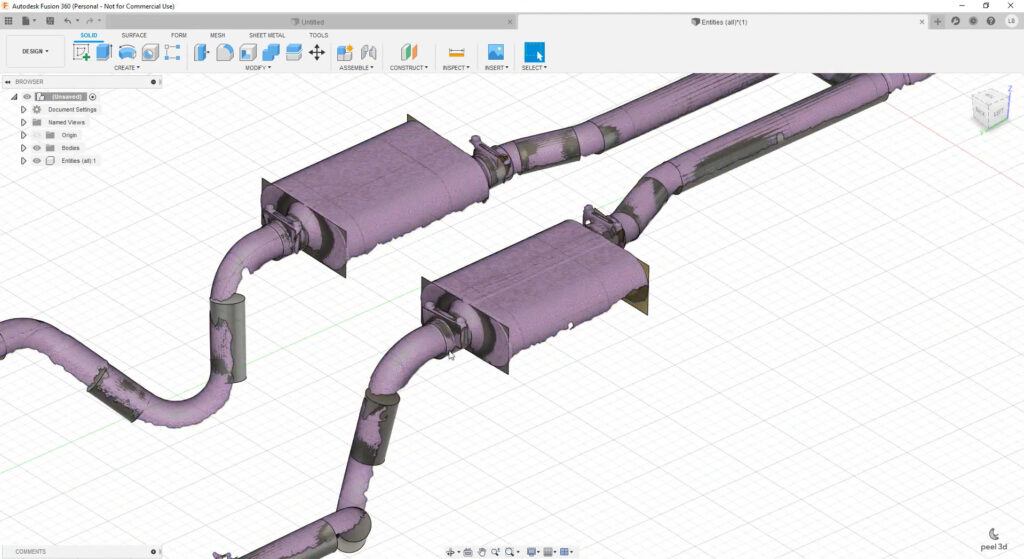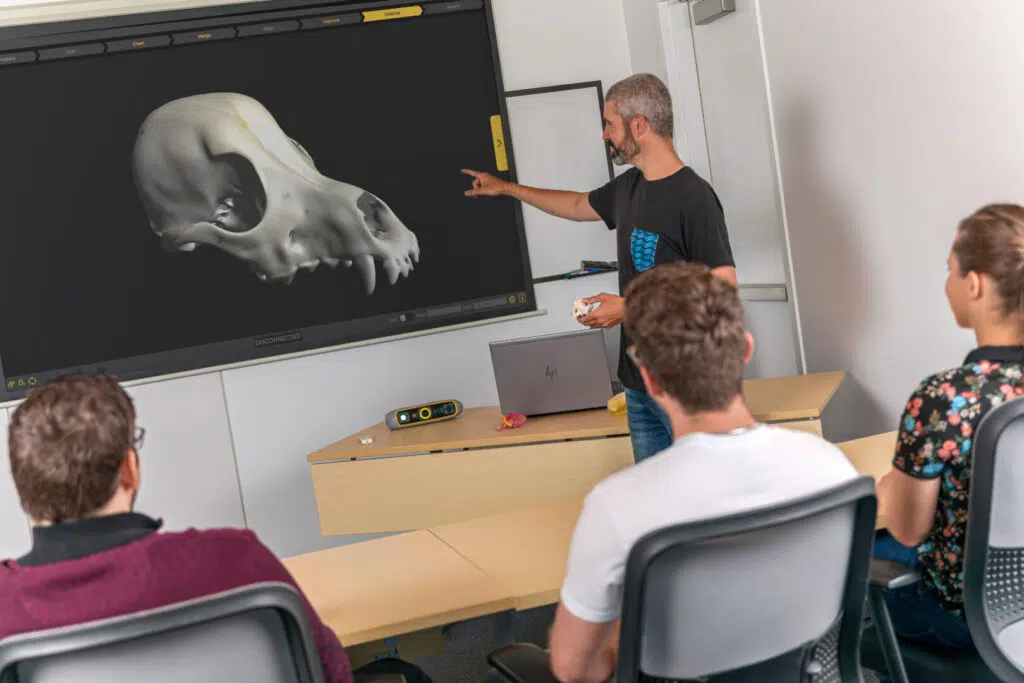3D scanning is a versatile technology with many applications across industries, including automotive, manufacturing, architecture and construction, aerospace, and medical. In education, we've seen high school and university students use 3D scanners within CAD and advanced manufacturing programs and in fab labs and makerspaces to help prepare students for future careers that may involve 3D scanning. Read on to get some ideas for incorporating 3D scanning into your classroom, whether it's an introductory course or an advanced-level project.
What is 3D Scanning?
3D scanning is a form of technology that renders real-world objects into digital models. Models produced with 3D scanning can be used for a variety of applications, such as dimensional analysis, digital asset creation, model replication (via 3D printing, machining, etc.), and more.
How Does a 3D Scanner Work?
3D scanners work similarly to video cameras, which convert light into a pixelated 2D image one frame at a time. The big difference with a 3D scanner is that it simultaneously projects a pattern on an object while using a camera to interpret that pattern into 3D geometry, also one frame at a time. Each frame is stitched together in computer software to produce a digital 3D replica of the scanned object.
Which 3D Scanner to Choose
For AET Labs' academic partners in high school and university environments, the Creaform Peel 3 provides a simplified platform to learn 3D scanning. Designed to balance the many applications of 3D scanning, the platform is packaged with easy-to-use software for beginners and more advanced post-processing software for those looking to explore the full potential of the technology.
3D Scanning Applications for the Classroom: Introductory to Advanced-Level
3D Scanning for 3D Printing

The most accessible entry-level application for 3D scanning is 3D printing. This is an excellent way to onboard students to a process that results in the manufacturing of a scale physical model. Digging into terms like mesh and polygon and learning how models are oriented in digital space can be discussed. A watertight mesh (a model that is a complete shell of polygons with no holes) can be achieved in a few simple steps using the Peel.EDU scanning software.
3D Scanning for Full Color Models

The Peel 3 is categorized as a white light scanner. White light scanners have the ability to not only capture the geometry of an object, but also its texture. In this case, the term texture refers to the spectrum of physical color of a material. With this process, you can produce digital replicas of artifacts or prototypes that can be used as a digital asset or reproduced with multicolor 3D printing tech like the Stratasys J55.
3D Scanning for Reverse Engineering

Leaning into the intermediate to advanced workflows, you can use the Peel 3 software package to create entities from the geometry of a scanned model. Entities like planes, cylinders, and cross-section sketches can be imported into CAD software like Autodesk Fusion 360 or SOLIDWORKS, where they are used as reference objects to create a new model that is dimensionally comparable to the original scan. A great example application is scanning old technology components that we have no design documentation of. Check out this video that details the workflow using a car exhaust.
The Right Setup for the Job

Finding a scanner that suits your classroom or lab projects is only half the battle. There is some significant computing that happens to achieve the speed and accuracy of the Peel 3 and its more advanced counterparts. A computer that is geared for CAD applications is your best option when working with a 3D scanner. Another thing to consider is mobility. If you aim to scan only small to medium objects in a lab environment, you might designate an area as the scanning station. On the other hand, a mobile cart will be handy when you are moving to different locations, like an automotive shop.
Our specialists at AET Labs are here to help you find the best 3D scanning solution for your New England school or university! We also provide professional development to train you on how to use a 3D scanner and to help you integrate it into your curriculum. Contact us with any questions or to schedule a demo.

